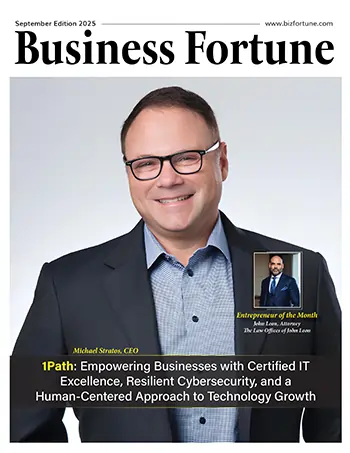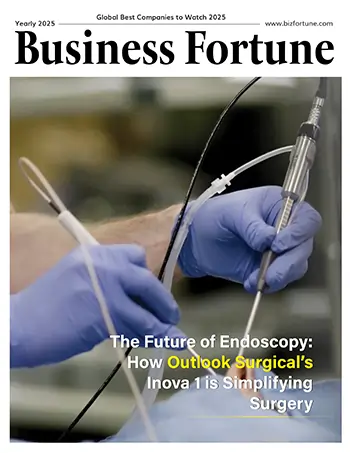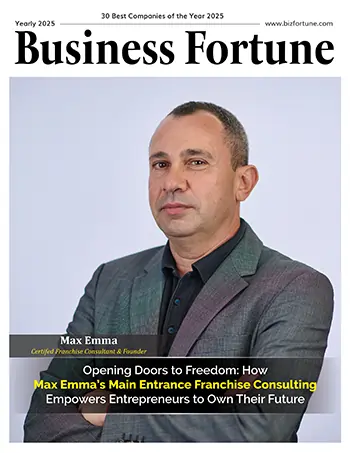Home Innovation IT Services Top 10 Emerging Trends in IT S...
Top 10 Emerging Trends in IT Services for 2025
IT Services

Business Fortune
04 November, 2024
Business executives must keep up with the most recent developments that are changing their sectors as a result of the rapid advancement of technology. Emerging technologies in IT developments will offer previously unheard-of chances for expansion, effectiveness, and change in 2025 and beyond. The leading technological developments that will influence the future are highlighted in this data-driven research. We divided it into eleven groups, including biotech, advanced computing, IT automation, extended reality (XR), and artificial intelligence (AI). Furthermore, each category includes particular technologies such as brain-computer interfaces (BCIs), extended reality (XR), predictive maintenance, and generative artificial intelligence (genAI).
Introduction to Emerging IT Services Trends for 2025
Technologies like sophisticated robots, generative AI, and quantum computing are revolutionizing businesses all around the world as 2025 approaches. This comprehensive analysis examines the effects of major developments, including IT automation, artificial intelligence, and enhanced connectivity, on more than 40 sectors.
The most in-demand technologies over the next five years are expected to be blockchain, 5G/6G networks, cybersecurity innovations, AI in IT services and machine learning, and quantum computing. The need for AI knowledge will increase dramatically as more businesses rely on AI in IT services for automation and decision-making.
The top ten Emerging technologies in IT services trends for 2025 are as follows:
-
Agentic AI: Self-governing AI in IT services that can organize and act to accomplish user-specified objectives. A workforce of virtual agents to support, delegate, and enhance the job of conventional programs or people.
-
Platforms for AI governance: Technological solutions provide businesses the ability to control the moral, legal, and practical behavior of their AI systems. Establish, oversee, and implement regulations that guarantee the responsible use of AI, describe the operation of AI systems, model lifecycle management, and offer transparency in order to foster responsibility and trust.
-
Security against disinformation: A new type of technology designed to methodically determine trust. Reduces fraud by fortifying identity validation measures; stops account takeover with contextual awareness, continuous adaptive trust model, and continuous risk scoring; and safeguards brand reputation by spotting damaging storylines.
-
Post-quantum cryptography (PQC): Safeguarding information against the risks of decryption brought on by quantum computing (QC). Protects data against the security risks associated with the advent of quantum computing.
-
Invisible ambient intelligence: The subtle incorporation of technology into the environment allows for new ways for objects to reveal their identity, history, and characteristics, in addition to the possibility of enforced provenance. This results in more natural and intuitive experiences. Low-cost, real-time tracking and sensing of objects also increases visibility and efficiency.
-
Computing that uses less energy: A strategy to improve sustainability through the use of renewable energy to power systems, more efficient hardware, code, and algorithms, and more efficient architecture. Respond to societal, economic, and legal demands to lower carbon footprints and increase sustainability.
-
Computing that is hybrid: Uses a range of network, storage, and computer technologies to address computational issues. Widespread real-time personalization made possible by improved human capabilities; self-governing companies driven by greater IT automation; settings for extremely effective, quick, and transformative innovation; artificial intelligence (AI) outperforming existing technology; and the use of the human body as a computing platform.
-
Computing in space: Provides immersive experiences by digitally augmenting the actual world with technologies like virtual and augmented reality. Meets the need for advanced visualization tools for decision-making and efficiency in healthcare, retail, and manufacturing; it also responds to consumer demand for immersive and interactive experiences in gaming, education, and e-commerce.
-
Multipurpose robots: Robots with the ability to multitask and switch between jobs with ease as needed. Increased efficiency; quicker return on investment; scalability, minimal risk, and quick deployment due to the lack of bolt-down infrastructure or architectural modifications; and the capacity to replace or collaborate with people.
-
Enhancement of the nervous system: Using technology that can scan and decode brain activity to enhance cognitive ability. Personalized education, safety enhancements, human up skilling, extending the working age of the elderly and next-generation marketing.
The Rise of Cloud-Native Services
Because cloud native solutions enable maximizing client experiences throughout an organization's platform, they have irreversibly changed software development and business paradigms. Many IT infrastructures were "cloud-friendly" not so long ago.
It turns out that our software programs long to be free, just as much as the rest of us do. Tight coupling reduces the effectiveness of apps; they become less nimble, economical, and scalable.
Presenting cloud-native apps, which capitalize on the cloud's boundless possibilities. Our apps realize their full potential in a more loosely linked architecture, just like individuals frequently perform at our best when granted liberty. These programs can more easily be modified and integrated with other systems as the cloud computing trends is their playground.
More than 95% of new workloads for digital applications will be implemented on cloud computing trends platforms by 2025, up from 30% in 2021, according to Gartner.
Cybersecurity as a Critical IT Service
Cybersecurity has become crucial in the current digital transformation era. It includes the tactics and safeguards implemented to protect our networks and systems, as well as the priceless data they contain. This comprehensive shield protects against risks that lie in the broad digital transformation realm and illegal access.
The continuous strains brought on by geopolitical conflicts highlight how important cybersecurity innovations are. Supply chains, physical infrastructure, and external networks—including crucial investment partnerships—are all under its protection. Businesses that put a high priority on cyber resilience are better prepared to handle the difficulties of this new era, maintaining the continuity and integrity of their operations in a world that is becoming more linked by the day.
Cybersecurity is a complex system that uses procedures and technology to protect digital assets. To restrict access to authorized users, it implements strict access restrictions. Firewalls and intrusion detection systems (IDS) monitor network traffic and implement pre-established rules and anomaly detection to prevent intrusions.
Encryption ensures secrecy by transforming data into an unintelligible format. Endpoint security, which includes intrusion prevention and antivirus software, guards against malware and unauthorized access. Security Information and Event Management (SIEM) systems provide real-time threat detection.
While security standards and training impart best practices and knowledge, penetration testing finds flaws. Incident response plans serve as a framework for responses to breaches. Continuous network traffic and system log monitoring helps identify threats, and patch management, which keeps systems updated, fixes vulnerabilities. To protect digital assets in an increasingly digitally linked world, cybersecurity innovations adapts to evolving threats.
IT services Automation with DevOps
In order to enable feedback loops between development and operations teams and enable iterative updates to be deployed to production applications more quickly, DevOps automation involves integrating technology that can complete tasks with less human assistance.
DevOps
DevOps is a strategy to platform design, automation, and culture that aims to provide quick, high-quality IT services trends delivery with more business value and responsiveness. Development and operations team members are combined into a single DevOps team through the use of DevOps methods. This facilitates the quicker and more effective transition of concepts and projects from development to production. Compared to more conventional manual management techniques, DevOps uses more dynamic future of IT infrastructure and more frequent code updates.
Automation
Automation is the process of using technology to do jobs with less help from humans. Automation facilitates the development of continuous integration, continuous delivery, and continuous deployment (CI/CD) workflows, speeds up procedures, and scales environments. Artificial intelligence, machine learning, deep learning, robotic process automation, business automation, IT automation, and industrial automation are just a few of the various types of automation.
Numerous technologies are used in DevOps setups. Changes to these intricate settings can take a long time to provide and install, and each component requires specialized understanding. IT teams may offer self-service capabilities and supply preapproved resources and settings with little manual involvement by implementing future of IT Infrastructure as Code (IaC) techniques with automation.
IT resources are necessary for software developers to design, test, and launch new IT services trends and applications. The IT services trends delivery pipeline may become more complicated, and resources may be delayed by manual IT activities. In the end, it may delay development by impeding proof-of-concept performance. IT teams may enable speedier proofs of concept, development, testing (using open source test automation projects like Jenkins), and deployment by fusing automation with application programming interface (API)-centric design.
Conclusion:
As 2025 approaches, emerging technologies in IT such as cloud-native apps, automation, and artificial intelligence (AI) are transforming the business landscape. Businesses need to adapt to these changes in order to stay competitive and meet shifting customer needs. Cybersecurity is still crucial for safeguarding digital assets in a world that is becoming more interconnected. By adopting cutting-edge technology and IT services trends automation, organizations may boost efficiency, encourage innovation, and take advantage of new opportunities. Keeping up with these IT services trends will be crucial for future success.


































